|
|
Guest Book | Pages & Links |
Clyde Harkins, Pilot
387th Bomb Group, 558th Bomb Squadron
|
|
Clyde and Amy Harkins |
Pictured from L-R: Clyde Harkins, Pilot; Bill
Kennedy, Co-Pilot; Chet Malec, Navigator; |
|
|
Silver Star, Mayen Bridge |
|
|
|
|
|
|
|
|
|
|
|
|
|
Chet Malec |
|
|
|
|
|
|
|
|
|
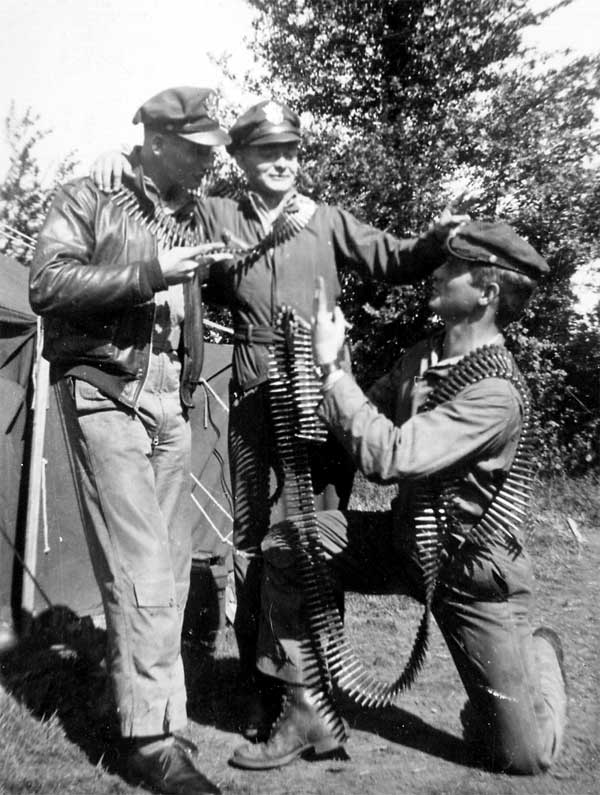
Bill Kennedy, Clyde Harkins and Don Block
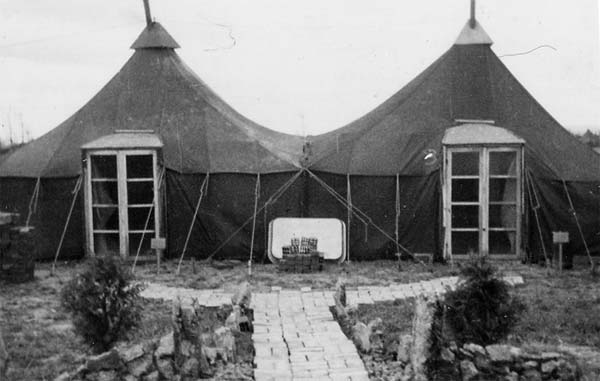
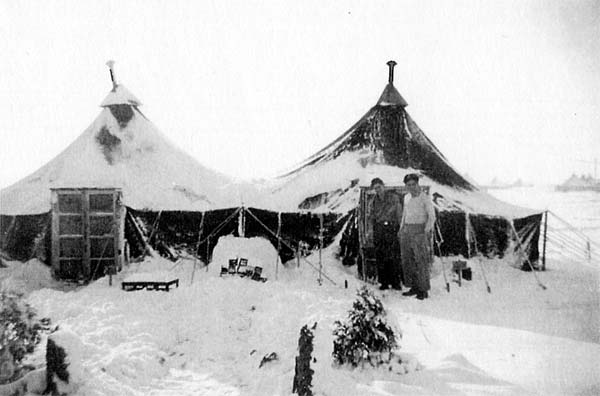

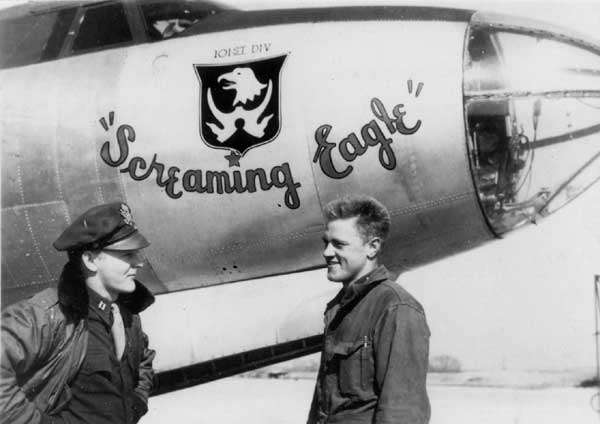
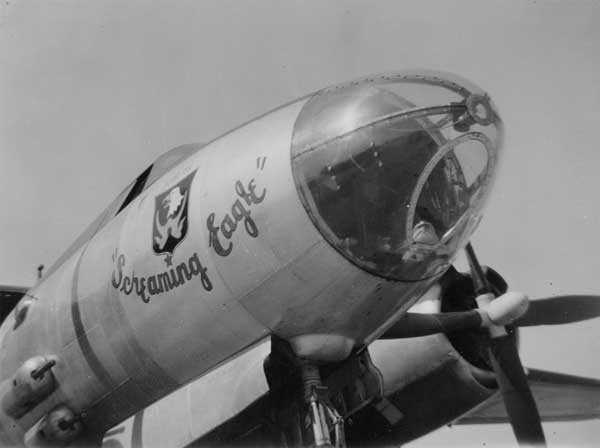
COMBAT MISSIONS OF WALTER C HARKINS 387th. BOMB GROUP 558th. BOMB SQUADRON
| DATE | A/C | ||
| JULY | |||
| 9th | 41-35016 K | Mantes Gasicourt no attack weather recall | |
| 16th | 41-31654 P | Foret de la Guerche fuel dump | |
| 23rd | 41-31865 C | Serquigny railroad bridge | |
| 24th | 41-31661 J | Livarot ammunition dump | |
| 28th | 41-34993 M | Senonches fuel dump | |
| AUGUST | |||
| 5th | 41-35015 K | Briollay railroad bridge | |
| 12th | 41-34993 M | Corbiel refuelling sidings | |
| 26th | 42-96179 Z | St Govain fuel dump | |
| SEPTEMBER | |||
| 5th | 42-96179 Z | Brest strong points | |
| 6th | 42-96179 Z | Brest strong points | flight lead |
| 29th | 42-96179 Z | Euskirchen marshalling yards | flight lead |
| OCTOBER | |||
| 2nd | 41-34993 M | Ubach defended area | flight lead |
| 3rd | 41-34965 Q | Duren ammunition dump | |
| 6th | 42-107631 H | Duren ammunition dump | |
| 20th | 42-107631 H | Moerdijk railroad bridge | |
| NOVEMBER | |||
| 4th | 43-34341 Z | Eschweiler gun positions | flight lead |
| 5th | 43-34341 Z | Homburg railroad sidings | flight lead |
| 9th | 43-34341 Z | Dieuze | |
| 16th | 41-34993 M | Luchen troop concentrations | flight lead |
| 17th | 43-34341 Z | Weisweiler troop concentrations, no attack solid cloud undercast | flight lead |
| 19th | 43-34341 Z | Landau arsenal | flight lead |
| 25th | 43-34341 Z | Kaiserlautern ammunition dump, no attack | flight lead |
| DECEMBER | |||
| 1st | 42-96164 J | Saarlautern defended area | flight lead |
| 9th | 42-107630 A | Dellfeld railroad sidings | flight lead |
| 11th | 43-34341 Z | Dellfeld stores depot | flight lead |
| 23rd | 43-34341 Z | Mayen railroad bridge superior bombing | flight lead |
| 24th | 43-34341 Z | Nideggen railroad sidings superior bombing | flight lead |
| 25th | 43-34341 Z | St Vith troop concentrations | flight lead |
| 27th | 43-34341 Z | Noneweiler railroad bridge superior bombing | group lead |
| JANUARY | |||
| 1945 | |||
| 14th | 43-34289 Q | Ahrweiler railroad bridge excellent bombing | flight lead |
| 28th | 43-34341 Z | Mayen communications centre | group lead |
| FEBRUARY | |||
| 6th | 43-34341 Z | Berg Gladbach motor transport depot | group lead |
| MARCH | |||
| 1st | 43-34341 Z | Rheinbach communications centre | group lead |
| 4th | 43-34341 Z | Bruhl communications centre | group lead |
| 11th | 43-34341 Z | Sythen explosive works | group lead |
| 15th | 43-34341 Z | Pirmasens road junctions excellent bombing | group lead |
| 18th | 43-34341 Z | Worms road junction excellent bombing | group lead |
| 21st | 43-34289 Q | Stadtlohn road junction excellent bombing | group lead |
"On 16 December 1944 the Germans launched their great counter offensive, known as the Battle of the Bulge, against the Allied armies in the west, and made considerable progress during the next week under cover of weather unfavorable for flying. It was not until the weather finally improved enough during the night of 22 December 1944 that the full strength of the Allied power could be used to block General Von Rundstedt's offensive. As a means of doing this, it was imperative that the main enemy lines of communication and supply to the Bulge be severed. A target of high priority in this category was the Railroad Bridge at Mayen, Germany, which was one of the key bridges on the main railway from the German heartland to the Belgium Bulge. The 344-foot span of this bridge carried the enemy lifeline across the deep ravine of the Nette River, and its destruction would sever the railway for supplying the German offensive for a considerable period of time. On the night of 22 December 1944 the 387th Bomb Group received its orders to attack this bridge the following morning. This was good news because for the past week at night our airbase near St. Quentin. France had been subjected to several German air raids, a strafing attack and some reports of enemy paratroopers dropping in our area. The weather was so uncertain that Pathfinder (PFF), radar equipped, B-26's were scheduled to lead the first and second boxes in case it would become necessary to bomb on instruments because of cloud cover over the target. My good friend Dick Gunn of the 558th Bomb Squadron was leading the second box and I was leading the high flight of six bombers in the second box. After the PFF aircraft assumed the lead, we became separated from the first box because of the lousy weather and were unable to meet our fighters at the rendezvous point but decided to proceed without them. Near Bastone we started receiving moderate flak which required our standard evasive action turns. Shortly afterward, radio transmissions warned us of enemy aircraft in the area and almost immediately we were attacked by 15-25 enemy fighters consisting mostly of ME 109's. I kept my six-ship flight in close proximity to the box leader to provide for a concentration of firepower from our two flights. While looking down at the low flight in our box. I observed many enemy fighters pressing the attack with guns firing and pieces falling from the B-26's as they burned and spun out of control. As I recall the action now, it seemed like the whole thing was in slow motion with fighters moving in and B-26's falling out of the sky. It was all very depressing because I could see the guns firing from the fighters but I was unable to see any guns from the B-26's firing back. I reported this fact in the debriefing but later realized that from my angle of observation I would not be able to see the B-26 guns firing back. It did not take long before all ships in the low flight were gone. I thought all of them had been shot down but I believe one or two did survive although badly damaged. During all this activity one of the German fighters suddenly appeared from nowhere off my left wing and we looked directly into the faces of one another. After an instant of time, he pulled up and out of the formation. During debriefing, I was informed that this same sort of thing has occurred in prior mission reports and it was assumed that some hotshot German fighter pilot was just showing off. In the meantime, the enemy fighters turned on the box leader and my flight but broke off for some unexplained reason before shooting any of us down. My tail gunner, Joe Paduano, received credit for shooting down one ME-109. During all this action, one of the ME-109's appeared suddenly in a head-on attack for my flight. I tried to fire my four 50 caliber package guns mounted on the fuselage but, in all the confusion , they had not been charged so I missed my chance to shoot at that German! It was a lost opportunity that never occurred again! The fighters broke off as we neared the target area but then we started picking up intense and accurate flak. Also, the PFF ship broke off from our formation for some unexplained reason, and was later observed below and behind the formation being attacked and destroyed by enemy fighters. All of us had received some damage from flak and fighters that day. One ship in my flight had to return on single engine and another one was so extensively damaged that it was salvaged upon return to base. As luck would have it, clouds covered the target area on my first bombing run but there were breaks in the clouds and my bombardier, Warren Butterfield, felt he would have a good chance to bomb the bridge if we made another run. So back we went through the flak again and Butterfield did his thing again. He put the bombs right on the target and knocked the bridge out----Mission accomplished!!! The bomb pattern was within 120 feet of the aiming point with direct hits on the bridge. Out of 36 aircraft from our 387th Bomb Group, we were the only flight to hit the target. It was reported by a reconnaissance plane the next day that one span of the bridge had been destroyed and another partially destroyed. Railway tracks leading up to eastern approach to the bridge had been cut by direct hit. Through rail traffic from Andernach to Pelm was impossible. Both Dick Gunn and I were awarded the Silver Star Medal for this mission. In addition , the 387th Bomb Group was awarded the "Distinguished Unit Citation" for this mission at a presentation made in Paris at the end of the war. As you can easily tell from the above events, that was a memorable day for me and I will never forget it. In addition, there was another reason that the date of 23 December 1944 stands out in my mind, it was also my 22nd birthday! One more memorable event occurred in September 1990 when my wife and I were on a trip in Europe and were able to get to Mayen, Germany and see that bridge. It is a very picturesque bridge with tall supporting arches made of stone block that looked like the Romans had built it. I climbed up the embankment and walked across the bridge with many mixed emotions. It was only about 350 feet long and supported a single-track railroad. We lost six aircrews, suffered other personal injuries, and sustained physical damage to every one of our aircraft to stop the flow of war supplies to the German offensive-----I hope it was effective and worth all the sacrifices. It sure makes me feel out of date to think that one pilot, one plane, and one bomb can do today what it took 36 planes and crews to do in 1944." Col. Clyde Harkins Bomb strike photos on 23 December 1944 of the railroad bridge at Mayen, Germany.
Photos of Mayen Railroad Bridge taken in September 1990.
|
|